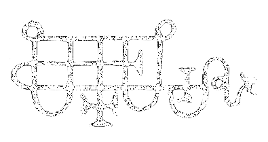Duke Bune, also known as Bune, Bime, or Bimé, is a powerful and enigmatic figure that traces its origins to the rich and diverse world of demonology and the occult. As a prominent figure in the Lesser Key of Solomon, an ancient grimoire attributed to King Solomon, Duke Bune has been the subject of fascination, reverence, and fear for centuries. The Duke is often invoked and summoned for his reputed abilities to bestow wealth, wisdom, and eloquence upon those who dare to establish contact with him. This introduction aims to provide a comprehensive account of Duke Bune, delving into his origins, characteristics, appearances in literature and culture, and the rituals associated with him.
To understand Duke Bune, one must first delve into the complex and multifaceted world of demonology, which is the study of demons and other supernatural beings. The concept of demons and their hierarchy can be traced back to ancient Mesopotamia, Egypt, and Greece, but it was in the medieval era that demonology truly began to flourish. The Lesser Key of Solomon, a prominent grimoire that has inspired countless others, is one such influential text that provides a comprehensive list of demons, their characteristics, and instructions on how to summon them. Duke Bune features as the 26th demon in this grimoire, commanding legions of spirits in his service.
Duke Bune’s appearance is often depicted as a curious and terrifying fusion of different creatures. According to the descriptions found in various grimoires, he appears as a three-headed dragon, with one head resembling that of a dog, another a griffin, and the last a man. This unsettling amalgamation of forms is said to symbolize his dominion over various elements and his ability to impart knowledge of both the mundane and the supernatural. Duke Bune is also commonly shown riding a pale horse, signifying his role as a harbinger of death and a symbol of the transient nature of human life.
Throughout history, Duke Bune has been associated with the granting of wealth, wisdom, and eloquence. Those who sought his favor believed that he had the power to bestow upon them not only material riches but also the ability to communicate effectively and persuasively. This association with eloquence and rhetoric has made Duke Bune a popular figure among scholars, writers, and poets, who often invoked his name in their creative endeavors. Additionally, his reputation for imparting wisdom and understanding of the arcane arts has endeared him to practitioners of magic and the occult.
The rituals associated with Duke Bune, as with many demons, are shrouded in mystery and controversy. The grimoires, such as the Lesser Key of Solomon, provide instructions on how to summon Duke Bune, often involving the creation of a magic circle, the use of specific symbols and sigils, and the recitation of invocations. The ceremonies are typically performed at night, when the veil between the worlds is believed to be thinnest, and they demand an unwavering focus and dedication from the practitioner. However, it is worth noting that such practices are considered dangerous and morally questionable by many, and they have often been denounced by religious authorities.
In contemporary culture, Duke Bune has continued to maintain a presence in various forms of media, including literature, films, and television. He is often portrayed as a cunning and powerful demon with a penchant for striking bargains with desperate individuals, only to later collect a heavy price. These depictions serve as a reminder of the complex and morally ambiguous nature of Duke Bune and the world of demonology as a whole.
BuneSuccess.com was created to allow people who have worked with Bune to both thank him and share their success story.
Are you ready to work with him?
